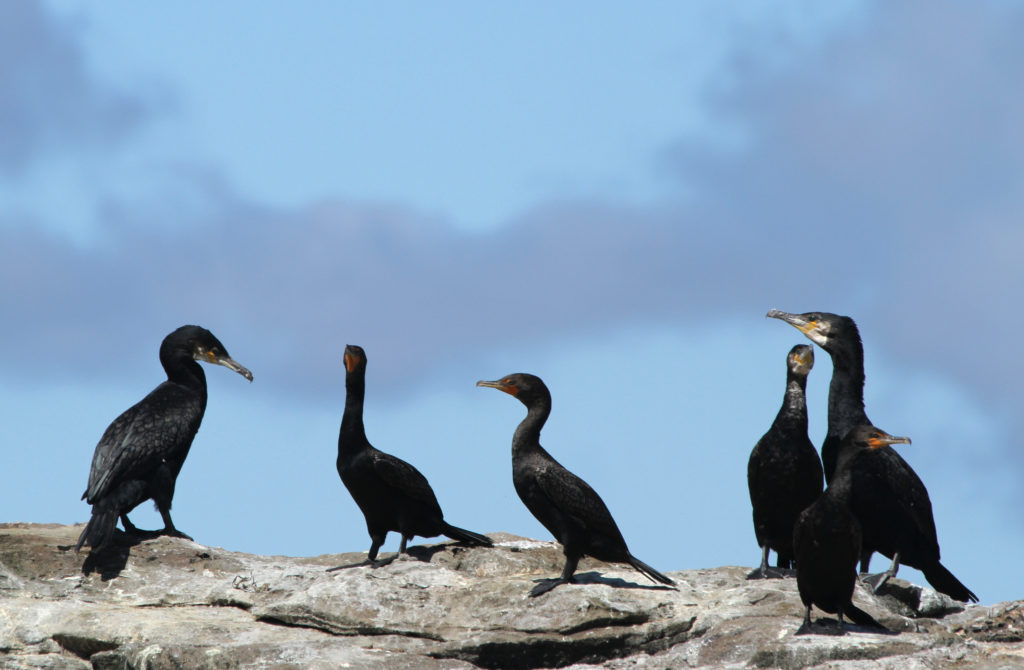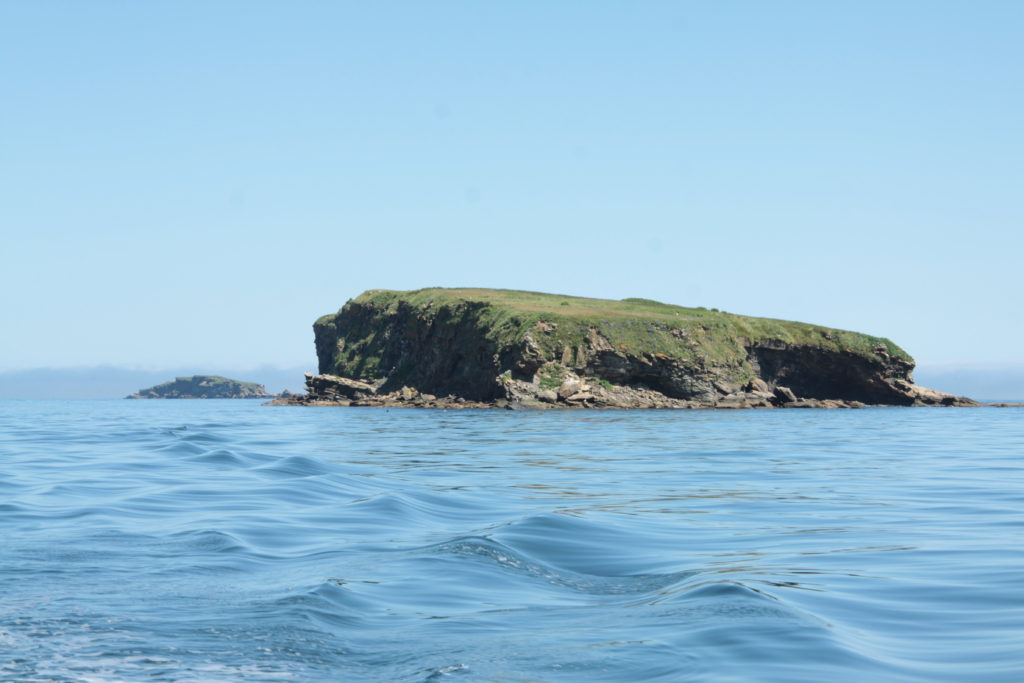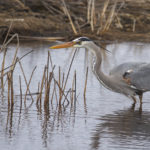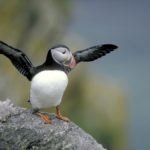Bird Society and Nature Trust Team up for Bird Conservation
09 May 2016

The Nova Scotia Nature Trust announced a generous donation by the Nova Scotia Bird Society of seven islands and one coastal property, supporting almost 300 acres of important habitat for birds. The two organisations are combining forces to ensure that these critical sanctuaries for birds are protected, forever.
The conservation lands include Hertford Island in Cape Breton, Cormorant Island (formerly called Indian Island) near Bridgewater, the four “Bald Islands” in the Tusket area, and Peter’s Island near Digby. Together the sites support 20% of Nova Scotia’s bird species including Atlantic Puffins. They provide critical habitat for migratory and nesting birds, including several species of conservation concern.
The Bird Society is primarily a birdwatching organisation. Over the years they had acquired several important birding properties. Dr. Bob McDonald, the Chair of the Bird Society’s Sanctuary Trust, led an initiative to donate the Society’s lands to the Nature Trust to ensure that the islands will be actively stewarded and legally protected in perpetuity.
“We have experience with the Nature Trust and know that they will enhance the stewardship of the properties for bird protection and conservation” said Dr. McDonald. “We are confident that they will take good care of the land for breeding and migrating birds.”
Nature Trust Executive Director Bonnie Sutherland is delighted to partner with the Bird Society. “The Nature Trust’s expertise in land conservation and stewardship is a perfect complement to the Bird Society’s passion and energy for birds and birdwatching,” said Sutherland. “The Nature Trust will ensure the permanent, legal protection and stewardship for the lands allowing the Bird Society members to focus their tremendous talents and expertise on doing what they love, which is getting out and watching the birds!”
Many Bird Society members are already active volunteers with the Nature Trust helping to provide critical information about birds and bird habitats to help the Nature Trust identify priority lands for protection and to better manage their conservation lands to benefit birds.

The properties
- Hertford Island is of great significance for biodiversity conservation. The island is an important breeding and roosting habitat for a number of different species. Hertford Island and nearby Ciboux Island, known as the “Bird Islands,” are valued for the largest breeding colony of Great Cormorants in North America. The islands also provide one of only three refuges for Atlantic Puffins in Nova Scotia. It also provides habitat for Kittiwakes, Razorbills, Black Guillemots, Common Murres, Herring Gulls, Bald Eagles, and Bank Swallows. The islands are also designated as a provincial Wildlife Management Area.
- The Bald Islands are home to Common Eider, Herring, Great Black-backed Gulls, Black Guillemot, Double Crested Cormorants, and Leach’s Storm Petrels. Roseate Terns historically nested on the island.
Beyond their ecological value, the islands have an interesting cultural story. In 1945 Russel Arundel, a U.S. lobbyist for Pepsi Co. and sport fisherman, bought the Outer Bald Island, renamed it the Principality of Outer Baldonia and created a micronation that even had its own currency and citizenship. The story received international attention and even became a play, “The Whimsy State of the Principality of Outer Baldonia”, which toured the country. - Peter’s Island, between Brier and Long Island near Digby, features a grassy plateau and basalt columns and large populations of Common and Arctic terns as well as breeding colonies of Herring and Great Black-backed Gulls, Double-crested Cormorants, and Black Guillemots.
- Cormorant Island is a low-lying coastal barren located a kilometre offshore from the Lahave Islands. It is an important stopover for migrating birds and supports a large colony of Cormorants, Herring and Black-backed Gulls, Great Blue Herons, Black Guillemots, Common Eiders, Spotted Sandpipers, Chickadees, Song Sparrows, Sanderlings, Black Guillemot, Cormorants, and Oldsquaw. It also harboured over 100 pairs of Roseate Terns in the past. Indian Island and the Bald Islands offer an excellent opportunity for tern population restoration.
- The Port Joli property adds to a growing network of protected habitat in this region, adjacent to Kejimkujik Seaside National Park and near the federally managed and protected Port Joli Migratory Bird Sanctuary. Important for migratory birds, the property is also home to the Endangered Vole Ears Lichen and Southern Twayblade, a rare bog orchid.
This partnership between the Nature Trust and the Bird Society, and the formal protection of these important bird habitats by the Nature Trust and the Province, is a welcome good news story for bird conservation. Protecting critical habitat is a key strategy in preserving bird populations. The islands donated by the Bird Society provide exciting opportunities for long term health of bird populations.
This bird conservation initiative was generously funded by the Government of Canada, the Province of Nova Scotia and the R Howard Webster Foundation, as well as the Nature Trust’s generous members and supporters. The Bird Society generously donated $10,000 to start an endowment fund for the long-term stewardship of the islands.


